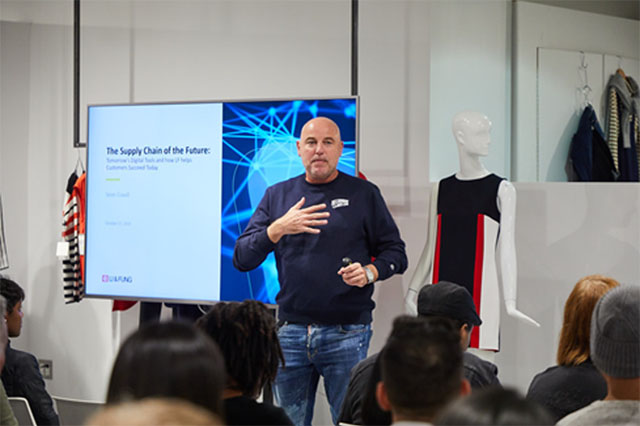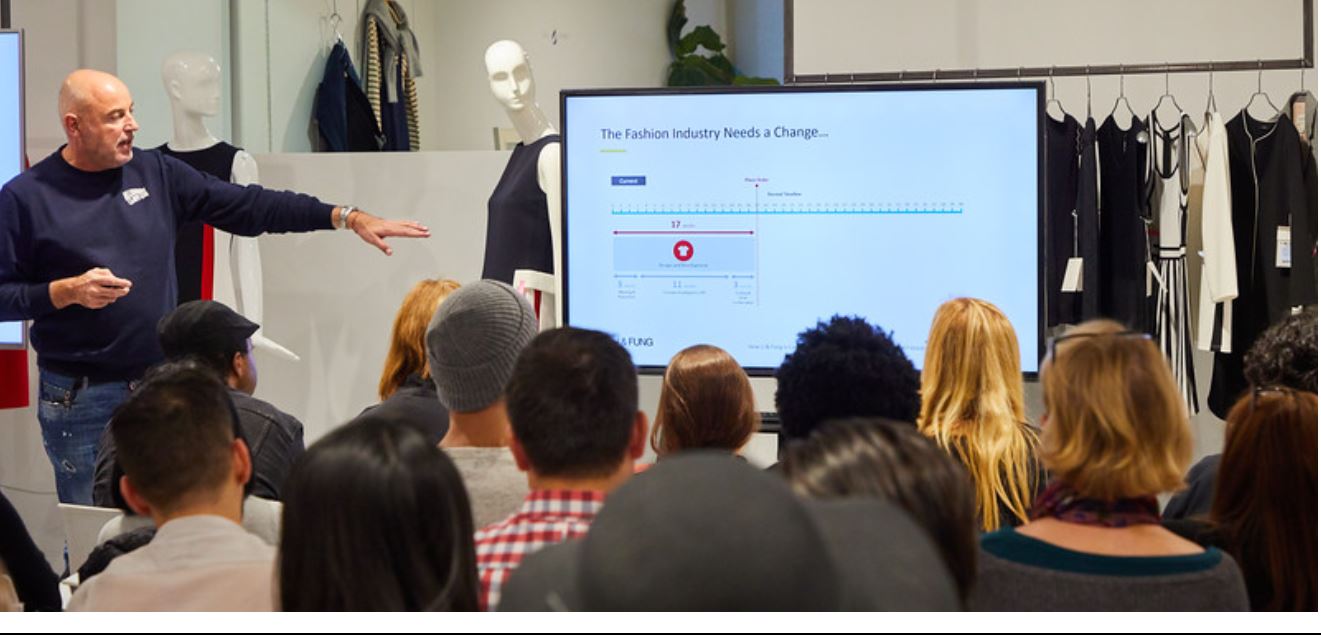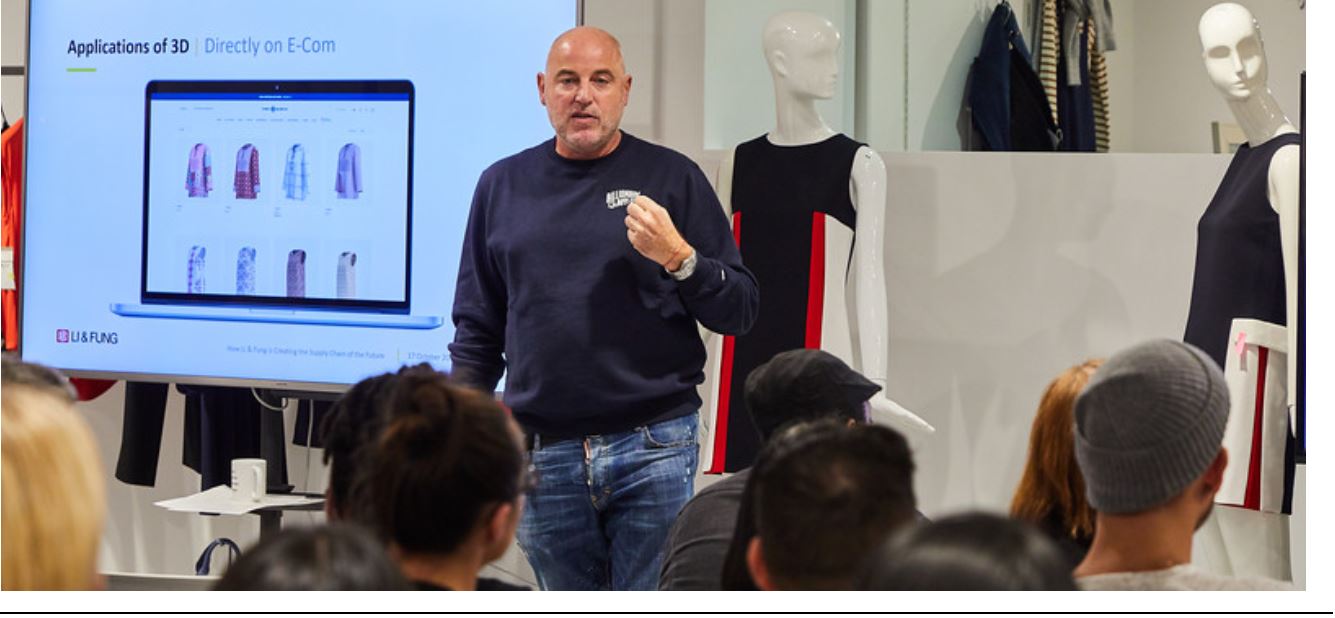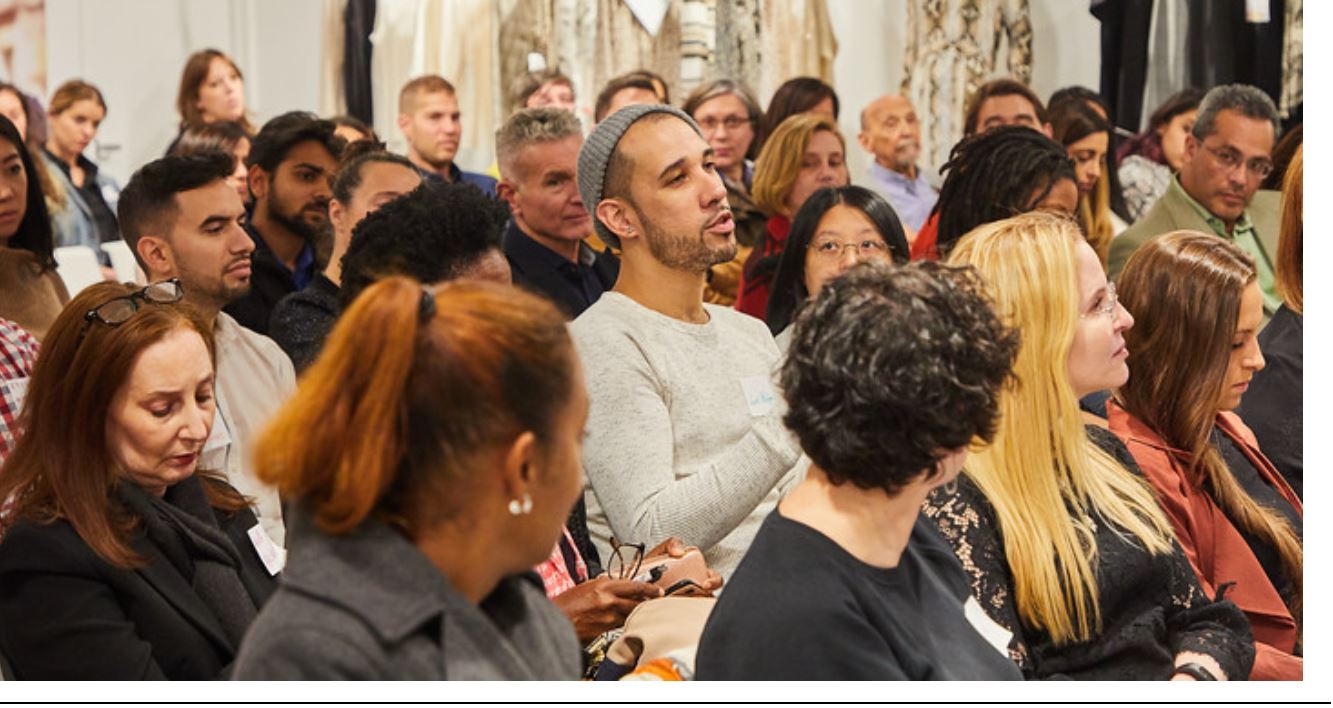
Web Developers
Coresight Research cohosted a showcase event called “3D Sampling and Design Reduces Costs and Enables Product Development” with Li & Fung on October 17 in New York City. The showcase gave Li & Fung, a global market leader in the application of 3D design and sampling technologies, an opportunity to explain how these technologies are being used today and how they will change the retail industry in the future.
Coresight Research CEO and Founder Deborah Weinswig kicked off the event and noted that Coresight Research’s report on 3D rendering is our most-read report to date.
Coxall pointed to three specific challenges he sees in the fashion industry:
Coxall said that Li & Fung’s goal is to create the supply chain of the future in order to help its client companies navigate digital solutions and to improve the lives of a billion people in the supply chain. The company’s network of global factories stabilizes the sourcing process for customers during times of political tension among global powers. It also offers access to large supplies of fabrics and materials and to workers across time zones.
By digitizing various steps in the supply chain, Li & Fung seeks to make design and production processes faster, more intuitive and more efficient for all parties involved. With Li & Fung’s platform, a client can sketch a design, take a photo of a pattern or describe in a chat what she is looking to create, and a representative can show the customer similar fabrics that are available and connect the customer to the best fitting factories. Coxall said that Li & Fung is about halfway to achieving its full vision for the future supply chain.

Coxall also spoke about the digital design platform’s other capabilities. Besides presenting a simple model to the customer, the platform lets the customer alter designs on the spot by changing a pattern or its shape, size or orientation, for example. Customers can also review and alter the fit of a design within a 3D program. Coxall says that fit technology is becoming so accurate that companies can get the fit right on the first try in many cases.
Retailers and brands can upload 3D renderings directly to e-commerce websites. Furthermore, they can create a full 3D room display to show shoppers how products would appear together in a physical setting. Finally, companies can create a virtual fashion show featuring any desired background, angles and movement in order to show off products that may not even physically exist yet.
Finally, Coxall and his colleagues discussed the Li & Fung team’s background. They noted that it is important to have some team members with technical backgrounds, but that 3D design and sampling software is fairly easy to learn. He said that, of the 14–15 software environments available, senior-level designers can use three at any given time, mid-level designers can use two and beginners can use one.
Introduction
Sean Coxall is one of three Presidents of Supply Chain Solutions at Li & Fung. He spoke briefly about his 35 years in the retail industry, observing that even after all this time, retailers and brands are still doing the same thing. He said that, with all the technological advances focused on shipping and last-mile delivery, few companies are addressing the larger issues within the supply chain. Although originally an Asia-focused company, Li & Fung now serves many other regions, providing sourcing solutions to many US and European brands and retailers. In the US, Li & Fung works most closely with Global Brands Group, which owns, licenses or manages brands, including Frye, Calvin Klein and Spyder. According to Coxall, roughly 75% of Li & Fung’s business is in soft goods and 25% is in hard goods, and its top three sourcing countries are China, Vietnam and Bangladesh. The firm has a large customer portfolio, and it strives to use digital technology to help its customers succeed. In his presentation, Coxall focused on three main ideas: speed, innovation and digitalization.Challenges in the Retail Industry
 Source: Coresight Research
Source: Coresight Research
Coxall pointed to three specific challenges he sees in the fashion industry:
- Global, political issues between the US and China. Tariffs are becoming a challenge, making it increasingly difficult for China to source products from the US. However, Li & Fung’s global network includes more than 50 countries, allowing it to circumvent many of the issues relating to tariffs.
- Brands and retailers need to speed up their production processes and get products to consumers as quickly as possible in order to stay relevant. The customer is king, and shoppers tend to know what products they want. As brands and retailers search for ways to keep on top of current trends and demands, they are shifting from a supply chain mentality to what Coxall called a “demand chain.”
- There is a need to change business peoples’ mind-set about how the design and sampling process could work. Retailers and brands are stuck in their old ways and are worried about how the adoption of 3D technologies will impact the creative process.
Li & Fung’s Platform Solution
 Source: Li & Fung
Source: Li & Fung
Coxall said that Li & Fung’s goal is to create the supply chain of the future in order to help its client companies navigate digital solutions and to improve the lives of a billion people in the supply chain. The company’s network of global factories stabilizes the sourcing process for customers during times of political tension among global powers. It also offers access to large supplies of fabrics and materials and to workers across time zones.
By digitizing various steps in the supply chain, Li & Fung seeks to make design and production processes faster, more intuitive and more efficient for all parties involved. With Li & Fung’s platform, a client can sketch a design, take a photo of a pattern or describe in a chat what she is looking to create, and a representative can show the customer similar fabrics that are available and connect the customer to the best fitting factories. Coxall said that Li & Fung is about halfway to achieving its full vision for the future supply chain.
The Materials Platform
Before describing how Li & Fung’s materials platform works, Coxall described the old system for sending and choosing materials. A small swatch would be sent to customers, and they would do their best to imagine how it would look on a larger scale. Then the fabric would be sent to a mill, which would choose whatever fabric seemed closest to the swatch. This could lead to errors and confusion, since the various stakeholders often had a different understanding of what the customer wanted. Li & Fung’s materials platform allows customers to chat with sourcing representatives and upload photos directly to the platform. The representatives can then look through their materials database to find which relevant fabrics are available and in what quantities. Customers can also talk directly to mills to discuss what products they need. The materials platform can shorten the time needed to complete this process from two weeks to just three hours in many cases. The platform converts physical assets to digital ones, while making cost benchmarking more robust. It also helps companies deepen their relationships with mills and trim suppliers. Finally, the materials portal facilitates efficient collaboration among customers, vendors and Li & Fung, helping merchandisers, vendors and customers search new fabrics and allowing mills to curate their own online showrooms.The Digital Design Platform
Within one year of launching its digital design platform, Li & Fung became a market leader in design. The company utilizes a variety of third-party software products and ensures that translating information across the programs is simple. The goal of digital design is to render an image that could be mistaken for a photograph of a real object. Coxall noted that footwear and handbags are particularly good candidates for 3D rendering because prototyping these products is costly and difficult and the 3D renderings look exceedingly realistic.
 Source: Coresight Research
Source: Coresight Research Source: Coresight Research
Source: Coresight Research